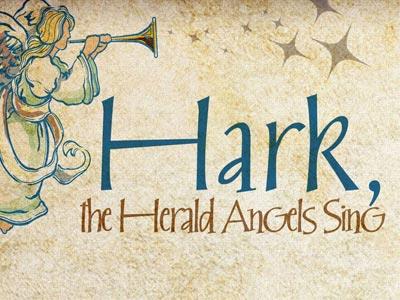-
A Christmas Carol
Contributed by Davon Huss on Dec 22, 2014 (message contributor)
Not that it is in the Bible but a story familiar around this time of the year is Ebenezer Scrooge. Ebenezer is a man incapable of joy. Scrooge is rich, but he lives alone in squalor. He takes pleasure in nothing and is indifferent to human suffering. On Christmas Eve, Scrooge is visited by a series of ghosts who take him on a journey of insight into his own character. They show him his sin. The ghost of Christmas future is the most shocking vision of them all. In a desolate graveyard, the spirit’s bony finger points Scrooge toward a headstone. Scrooge is commanded to wipe the snow off and read the name carved on it. The name is his own. Weeping and shaking, Scrooge pleads with this spirit: “Are these the shadows of things that will be... or are they the shadows of things that may be only? Why would you show me this if I was past all hope? Tell me that I may sponge out the writing on this stone.” Can the past be removed? Humanly speaking, it’s impossible. This is the human predicament. We are chained to our pasts, to things done and undone that cannot be changed. “What is twisted cannot be straightened; what is lacking cannot be counted.” Ecclesiastes 1:15, NIV. The misdeeds of the past are like chains. Our sin is carved in stone- or so it seems. Scrooge awakens from his vision and discovers he is not dead. He still has time, the end may change. Without Jesus, what kind of hope is offered? “Many see only a hopeless end, but the Christian rejoices in an endless hope.” At the end we see that Ebenezer Scrooge had joy. Nobody knew how to celebrate Christmas like Ebenezer Scrooge. Dickens titled this tale, “A Christmas Carol.” A carol is a song of joy. May we see ourselves as Scrooge saw himself and then see what God has done for us in Christ and then respond to the gospel. Then and only then there will be joy.
Related Sermon Illustrations
-
A Wealthy Businessman, Who Was Well Known For ... PRO
Contributed by Rodney Buchanan on May 8, 2005
A wealthy businessman, who was well known for being ruthless and unethical, told Mark Twain that before he died, he wanted to make a pilgrimage to the Holy Land. He said that when he got there he wanted to climb to the top of Mount Sinai, where Moses received the Ten Commandments, and there read ...read more
-
A Little Boy Was Standing By His Father Watching ...
Contributed by Kent Kessler on Dec 27, 2006
A little boy was standing by his father watching him trying to put a floppy disk into his computer. The father was having trouble getting the disk to go in all of the way. The little boy said to his father, “Maybe it has a penny in it?” Sure enough, when the father fished around inside where the ...read more
-
A. W. Tozer, Another Wonderful Devotional Writer ... PRO
Contributed by Mary Lewis on Jul 2, 2002
A. W. Tozer, another wonderful devotional writer said this: The widest thing in the universe is not space; it is the potential capacity of the human heart. Being made in the image of God, it is capable of almost unlimited extension in all directions. And one of the world’s greatest ...read more
-
Don't Think That There Is Any Better Answer To ...
Contributed by David Smith on Apr 21, 2005
don’t think that there is any better answer to that question than the one given by the great painter Renoir. In old age the great French painter, suffered from arthritis, which twisted and cramped his hand. Henri Matise, his artist friend, watched sadly while Renoir, grasping a brush with only his ...read more
-
Charles Spurgeon Offers This Warning: "If You ... PRO
Contributed by Robert Leroe on Jul 10, 2002
Charles Spurgeon offers this warning: “If you haven’t looked at Christ on the cross, you’ll have to look at Him on the throne—with great trembling. The sacrificial death of Christ will be brought before the eyes of all who refuse to accept His free gift of forgiveness and eternal life. In ...read more
Related Sermons
-
Living In A Season Of Joy Series
Contributed by Dean Courtier on Jul 24, 2017
Each of us experience the natural seasons of winter, spring, summer and autumn; and we also experience spiritual seasons in our lives. I want us to consider together how we can Live in a Season of Joy.
-
Our God Of Restoration Series
Contributed by Jerry Owen on Oct 1, 2016
Yahweh is the God who delights in restoration.
-
When Satan Tries To Steal Your Joy
Contributed by Dr. Jonathan Vorce on Nov 25, 2017
• Have you ever felt like you lost your joy? • Do you ever wake up and think… “I used to be happy.” • Could it be that satan has stolen your joy? • Let’s explore this today…
-
"'the' Birthday Celebration
Contributed by Maria Saunders on Dec 22, 2016
It’s poor etiquette to attend a party and don’t bring the host/honoree a gift. We should feel privileged to receive an invitation to attend. Therefore, it’s extremely important that we bring the right gifts to the honoree.
-
The Sunday After Christmas Sermon Series
Contributed by Dean Courtier on Aug 20, 2015
How did Christmas 2014 feel to you? Maybe your Christmas wasn’t all you expected. Now that Christmas is over, maybe the excitement has passed and life is already returning to some kind of normal. Whatever normal might be in your life!

 Sermon Central
Sermon Central






